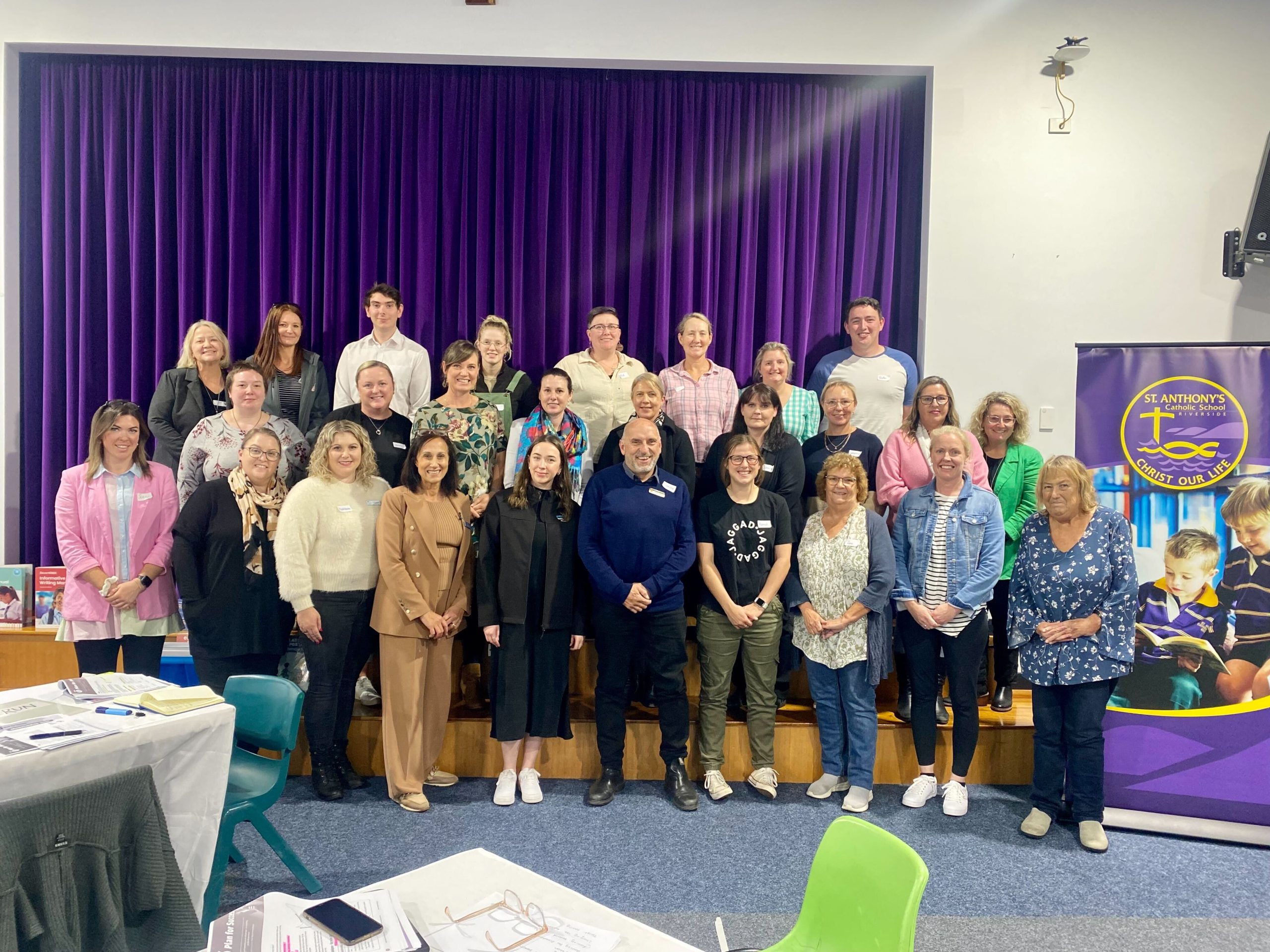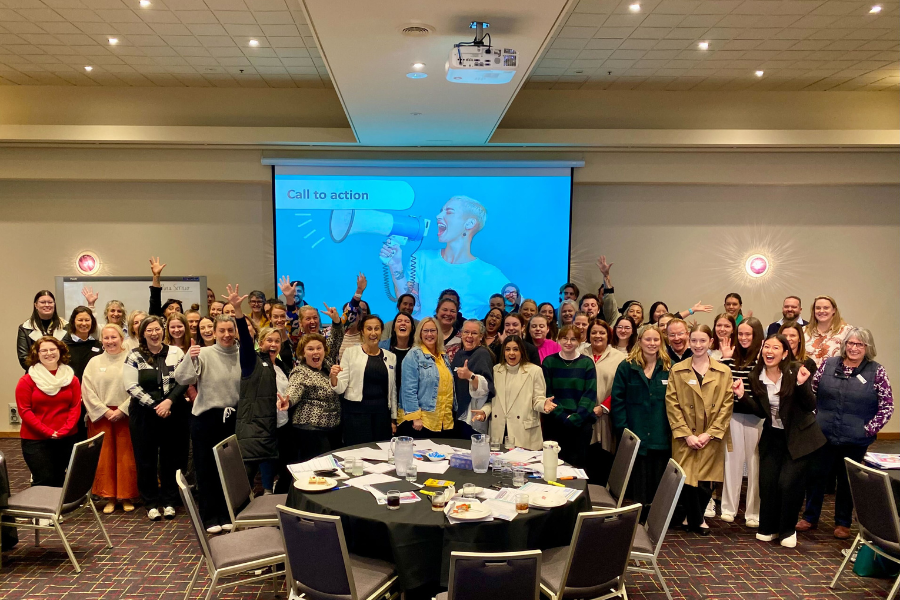Improving literacy levels remains a significant challenge for educators across Tasmania. With general literacy levels for working-age Tasmanians sitting just below 50%, there’s an urgent need for effective solutions. Recognising this, Catholic Education Tasmania (CET) launched the Literate Learners for Life initiative in 2022, a comprehensive approach designed to ensure that students achieve daily successes in the classroom. Teachers are supported in this with high-impact teaching practices through professional learning and coaching opportunities.
The Seven Steps program is a cornerstone of this transformation, set to influence students across Tasmania by enhancing writing skills at all year levels. In May, Seven Steps provided training and resources for 140 Catholic educators in Launceston, Devonport and Hobart.

CET has appointed Literacy Leaders in each of its 38 schools to support teachers and ensure that the principles of the program are consistently applied and adapted to the specific needs of each school community.
“Having all students across CET trained in the same teaching style is fantastic,” says Lisa Fenning, Literacy Project Lead Advisor at CET. “This unified approach fills gaps in their knowledge and helps them understand how to write effectively. Consistent learning with the same language throughout their schooling is essential.”
A shift in thinking
Tasmania’s literacy challenges prompted a fundamental rethink of CET’s educational strategies. “We knew we had to do something drastic,” Fenning explains. “We embraced the Science of Learning across all subjects, focusing on explicit and direct instruction.”
This scientific foundation supports a shift toward explicit instruction in both reading and writing, ensuring that all components are taught clearly and systematically.
While teaching the mechanics of writing – such as sentence structure, grammar and spelling – is crucial, CET also recognised the need to engage students’ creativity. This is where the Seven Steps program comes into play. “The Seven Steps approach quickly engages and sparks students’ creativity,” Fenning notes. “It’s about giving students the structure they need while also freeing them to be imaginative.”
Seven Steps provides a structured yet flexible framework for writing instruction, breaking writing down into key elements such as hooking the reader, tight narrative structures and dynamic character development. This chunking approach helps reduce cognitive load, making it easier for students of all ages and abilities to learn and master the skills.

The beauty of a flexible approach
The program’s flexibility allows teachers to meet the diverse needs of their students. This adaptability is crucial in classrooms where students have varying levels of ability and different learning styles. By providing clear, structured methods for writing, Seven Steps enables all students to participate fully and feel confident in their abilities.
Mel Jago attended the Launceston PD and could immediately see the benefits of the Seven Steps program. “In my classroom, 17 of my 27 kids are on learning plans,” she shares.
“Seven Steps’ methods – chunking, differentiating, breaking it down, working together – tick all the boxes for NCCD kids and those needing support. It builds their capacity without singling them out.”
Prioritising creative thinking
As a former art teacher, Mel doesn’t need convincing about the importance of creativity in writing. “Once students know the basics, they can expand and break the rules, making their work more interesting. A great takeaway I’ll be sharing with my kids was: ‘Writing isn’t about worrying about your spelling. I want you to worry about how your writing captivates me’.”
And it’s not just for narrative. Creative writing techniques can be used across all text types, which was a revelation for Mel. “I was sitting there thinking, oh my gosh, the persuasive texts we’ve been writing all start the same way and they’re boring. We’re not giving them licence to be creative. They’re told, ‘Ok, this is the box I want you to fit in’ but they’ve got so much more’.”
Implementation made easy
Another attendee, Isabelle Grossmith, highlights the practical benefits she saw in the Seven Steps program. “It’s wonderful to have so many hands-on examples of how we can roll out the program with our students,” she says. “I can take it back to the classroom and differentiate it for my kids – so you can implement it straightaway and keep building on it.”
Isabelle has identified a lack of confidence among her students as a significant barrier to writing. “A lot of my students say, ‘Oh, I don’t want to do writing. Writing’s boring’,” she explains. “They don’t necessarily have the confidence to write independently. They’re very hung up on not knowing how to spell a word or what to do next.”
She believes that Seven Steps can help alleviate these fears. “Something that I took away from this session was all the different ways we can brainstorm and solve problems,” Isabelle says. “My class is definitely mischievous, but they have really good ideas. They just need to build stamina.”

The power of collaboration
One of the key strengths of the Seven Steps is its emphasis on collaborative learning. Activities are designed to encourage students to work together, share ideas and learn from one another. This helps build a supportive classroom environment where all students feel valued and motivated to improve their writing skills.
Isabelle plans to implement this into her writing lessons. “I think having a lot of verbal brainstorming sessions in small groups and as a whole class will be really beneficial,” she says. “They’re going to enjoy sharing their ideas and understanding that writing isn’t just a solo thing – you can get ideas from each other to write more powerfully.”
She’s optimistic about the impact of Seven Steps on her students. “I’m expecting students will come to the learning a lot more engaged and excited about writing,” she says. “I’m hoping to mix it with cross-curricular content, so with our humanities or our science unit there’s engaging content. When it comes to writing, knowing that they have the confidence to quickly get some ideas down is crucial.”
On the path to success
The Seven Steps program is helping to revolutionise the way writing is taught in Tasmania’s schools.
Through a combination of scientific insights, structured teaching methods and a focus on creativity, CET is addressing the literacy challenges that have long plagued the state. With the support of dedicated teachers and Literacy Leaders, students across Tasmania are developing the skills they need to become confident, capable writers.
As CET continues to build on these successes, the future looks bright for literacy education in Tasmania.
Share this story
Download this snapshot of Catholic Education Tasmania’s story of state-wide professional development and writing improvement.
Interested in transforming writing in your school, or across a network of schools?
We offer training and resource packages of all sizes. Give us a call on 03 9521 8439 or send us an email. Or visit our School workshops page to learn more.







